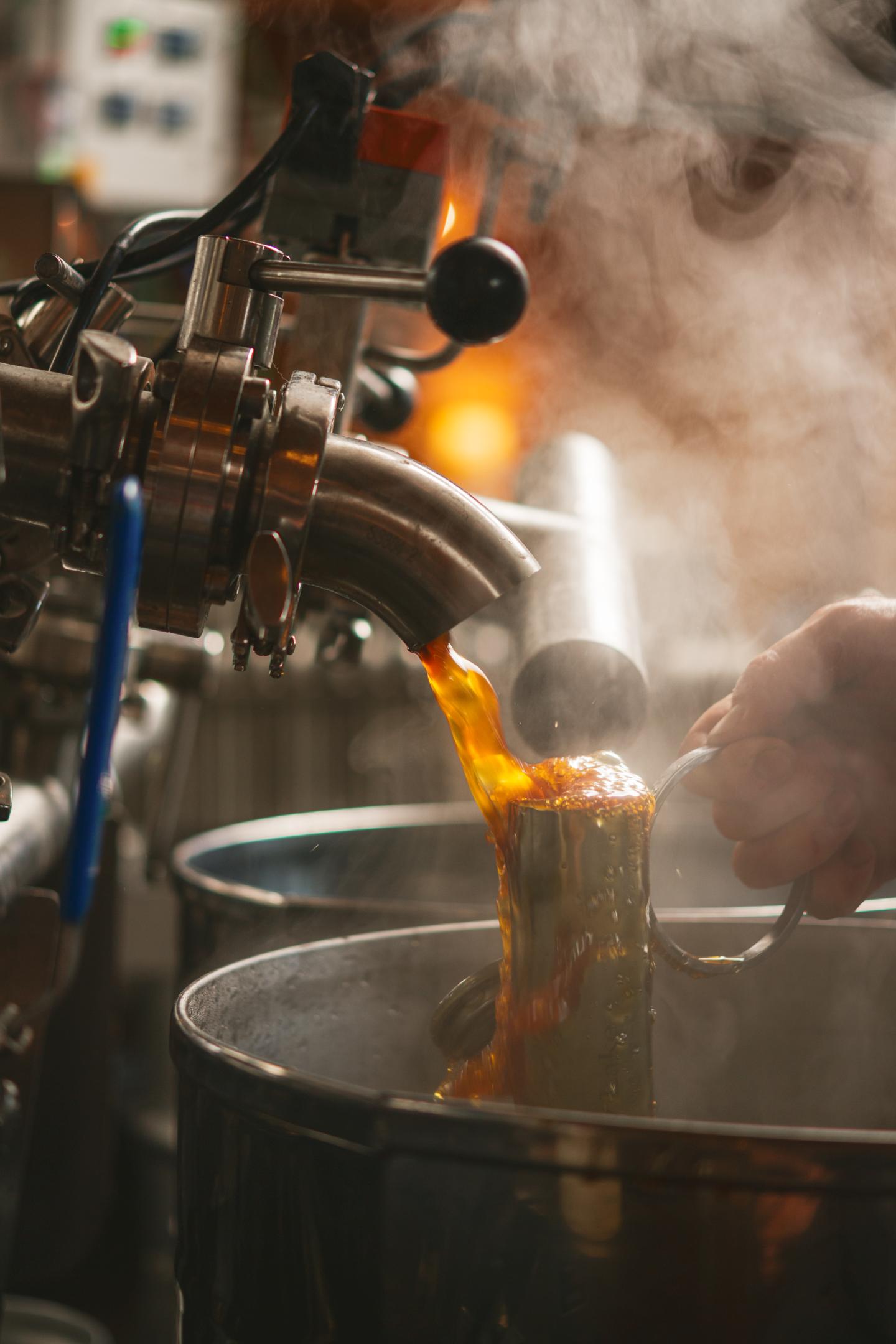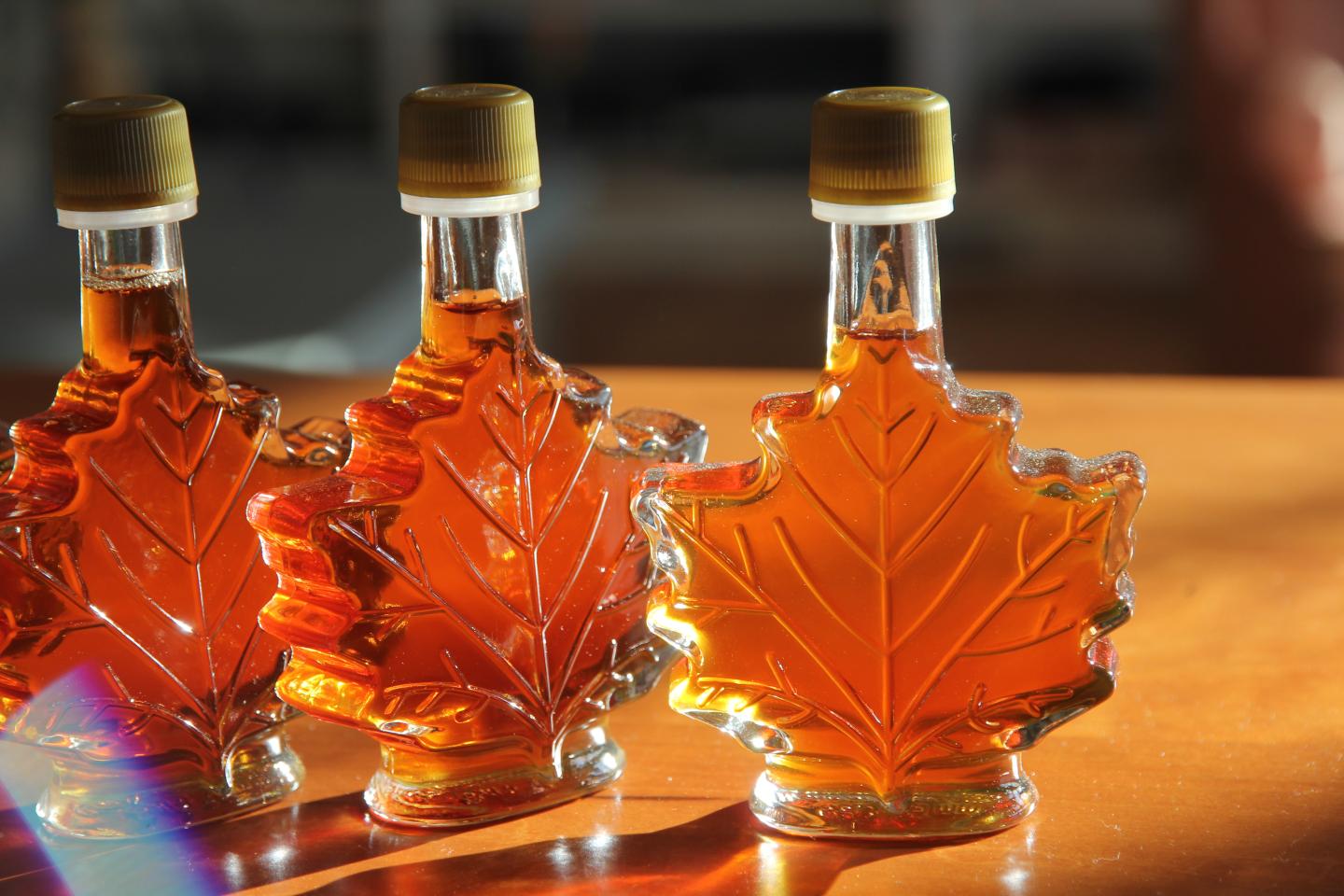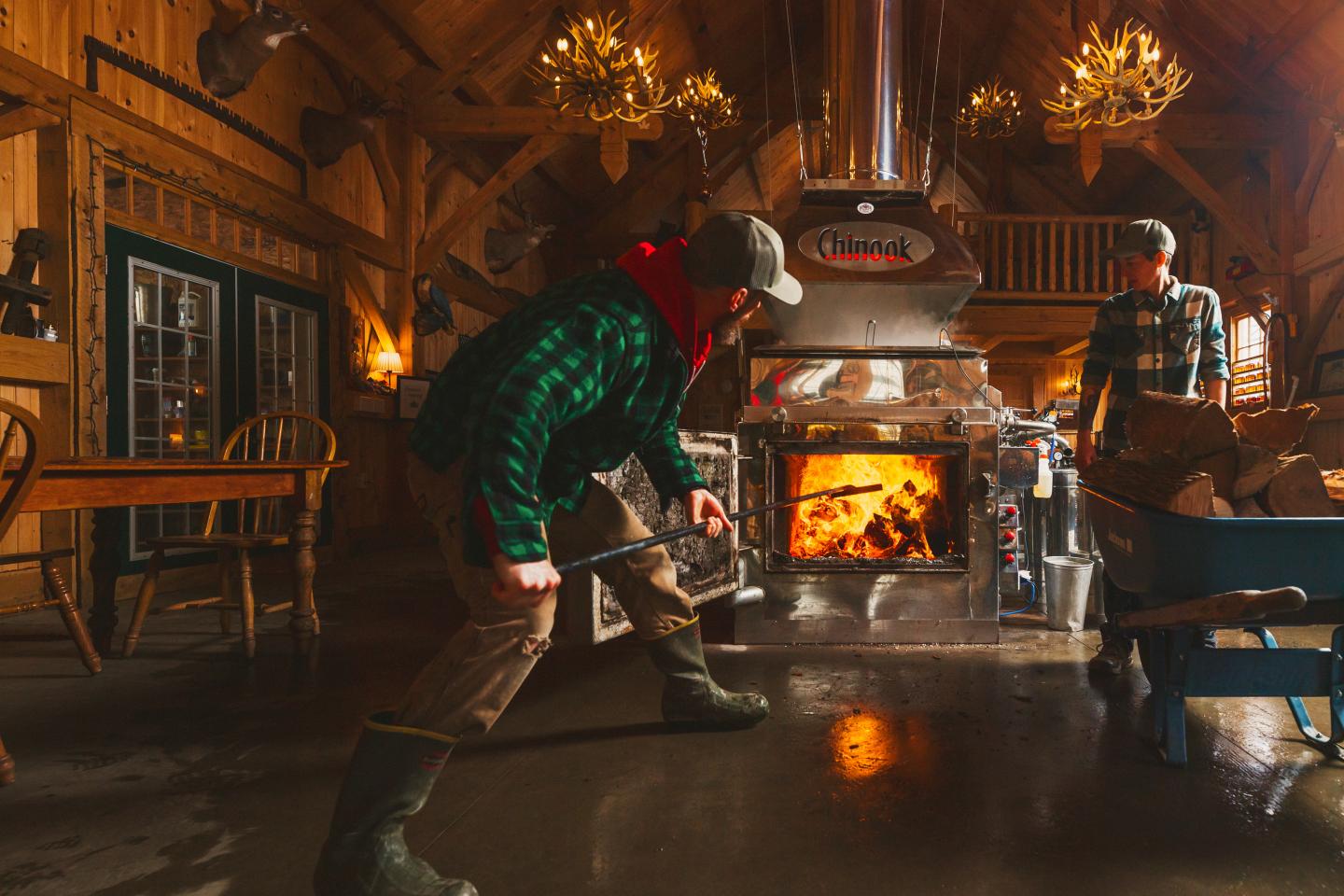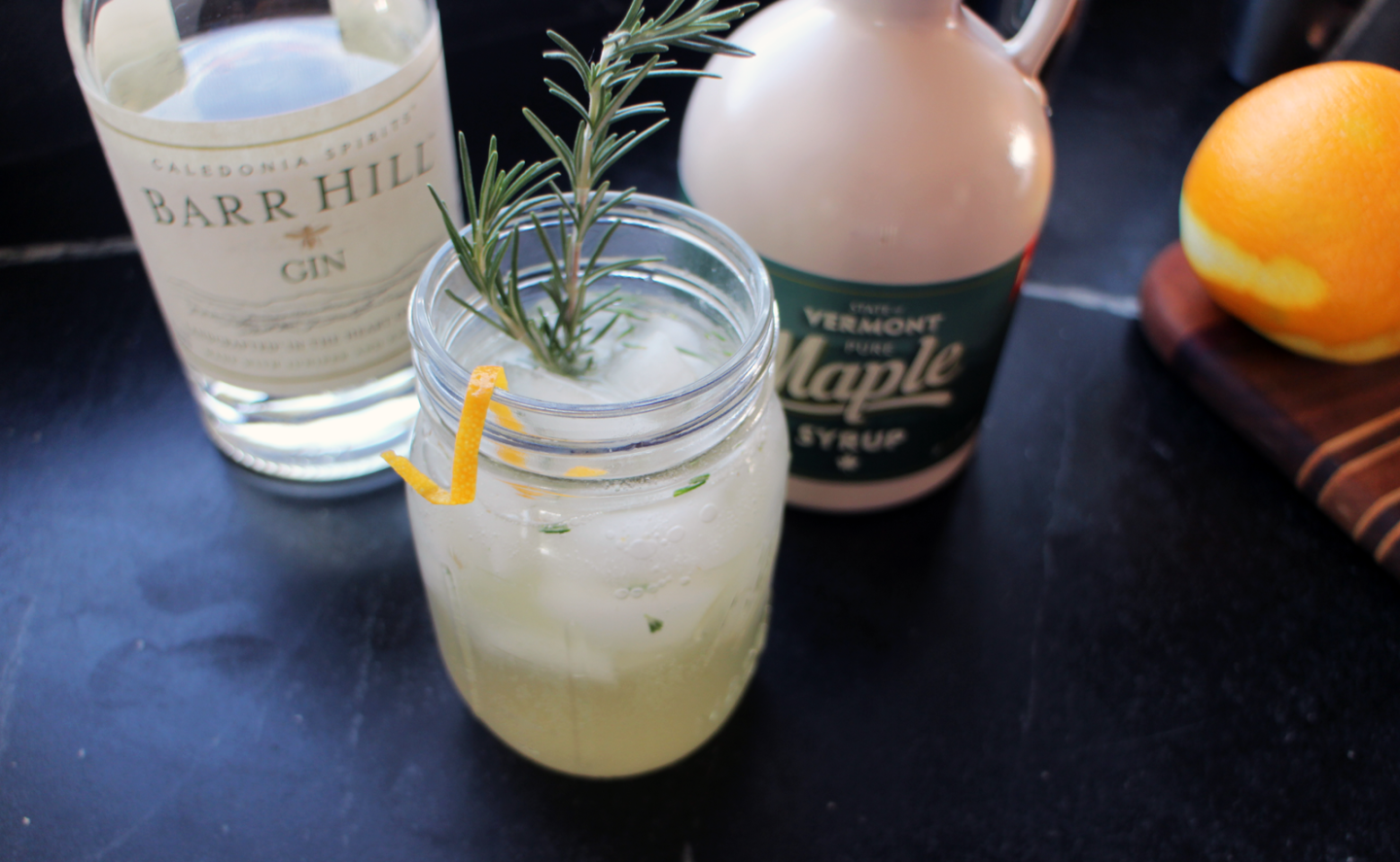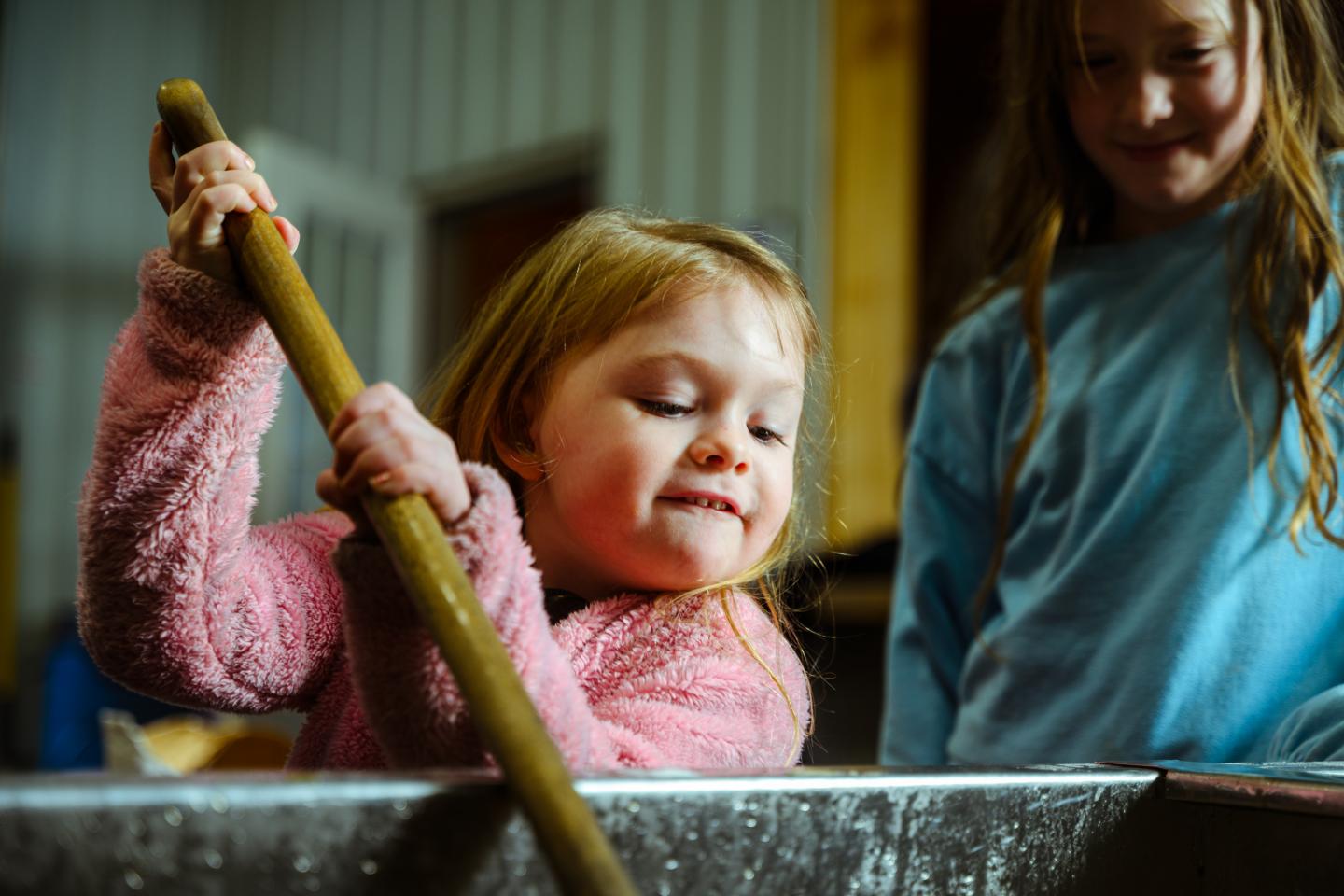

How It’s Made
How maple syrup is made
Follow along as we drizzle on some details about how it all goes from sap-to-tap-to-table. Take a moment to savor the journey of nature's most amazing sweetener.
Grades of Maple Syrup
There's a lot more behind that golden bottle than just good taste. Learn how Vermont maple is made, who makes it, and why it's the best in the world.
Golden color with a delicate taste
Usually made at the beginning of the new maple season, this syrup was once graded as Fancy. Subtle maple flavor is best appreciated when used on pancakes, waffles, or paired with rich dairy items like yogurt or vanilla ice cream. Try it over Greek yogurt or for a simple but elegant dessert, simply pour this grade of Vermont syrup over vanilla ice cream.
Amber color with rich taste
Usually made about mid-season, and often seems to be the most popular for all-around use. Full of characteristic maple flavor, this syrup is equally as good over waffles as it is in salad dressings, cocktails, or in a maple-sweetened barbecue sauce. If you're only going to have one grade of Vermont maple syrup in your kitchen, make it Amber Color with Rich Taste.
Dark color with robust taste
As the maple season progresses, the syrup darkens in color and develops a more robust maple flavor. Good for all-around use, its hearty flavor is a great choice for all kinds of recipes. Pour over baked apples or squash, use as a glaze for meats and vegetables, or sweeten baked goods. This grade pairs well with smoky and spicy flavors like chipotle peppers, sriracha, or bourbon.
Very dark color with strong taste
Produced at the end of the season, it's perfect for cooking and baking. When you need a strong maple flavor in a bread or cookie, ice cream, or barbecue sauce, this is the grade of choice.
What do sugar makers do in the off-season
- Whether sugar makers have an "off farm" job or not, there are many aspects of this work that happen year round - forest management, eradication of invasive plants, road management, pulling spouts, replacing lines, cleaning equipment. Sugar makers wear many hats - soil scientist, business manager and employer, forest manager, food safety specialist, maintenance technician, customer service rep, and so much more!
- A lot of Vermont sugar makers will be busy making products from their syrup to sell from the sugarhouse and on their websites as well as at Farmers’ Markets and Fairs.
- Sugar makers that use wood in their operations, stay busy splitting and stacking wood or creating their own wood chips or pellets.
- In the months leading up to sugaring season, sugar makers will begin tapping trees in anticipation of the first sap run.
- During the holidays, sugar makers who do mail order are especially busy making maple products and filling gift box orders. Make sure to include Vermont maple in your gift giving throughout the year!
Climate change
Sugar making requires ideal weather conditions from Mother Nature and sugar maples can be finicky trees, needing just the right conditions. The maple seasons and maple sap harvesting are highly sensitive to temperature changes of only a few degrees and have been greatly affected by long term climate change over the past 100+ years. The very particular weather conditions that stimulate sap flow have the potential for significant disruption with climate change. As a result, maple production is uniquely exposed to the risk of climate change.
